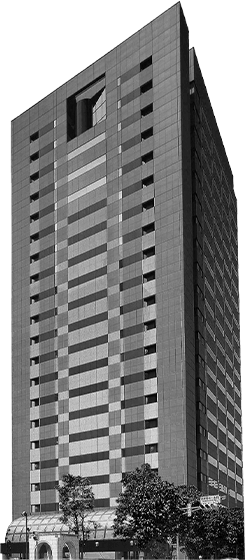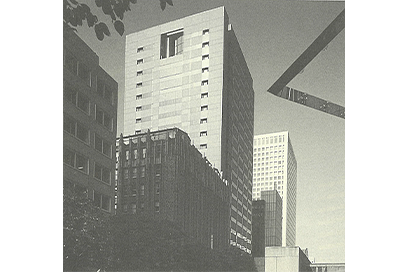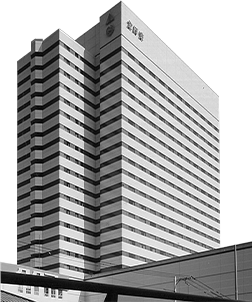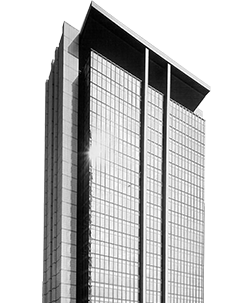 06
1989
06
1989
Tokyo
The Hibiya Daibiru Buildings
A Highly Challenging Project to Rebuild Actively Used Buildings
Rebuilding the Hibiya Daibiru Buildings in Stages
As an alternative to rebuilding both Hibiya Daibiru Buildings simultaneously, the decision was made to stagger the rebuilding of Buildings No. 1 and No. 2. It was clear that demolishing both buildings at the same time would make securing relocation space for tenants even more difficult. Furthermore, it was a significant point that since the machinery rooms which were the heart of the two buildings were concentrated in the basement of Building No. 2, demolishing Building No. 1 would have no effect on the operation of Building No. 2, and Building No. 2 could thus continue to operate. It was also clear that if the buildings were demolished together, rental income would be more greatly reduced during the rebuild period, but if the rebuild were done in stages, the effect on income could be minimized.
-

The completed Building No. 1 and Building No. 2 prior to rebuilding
The basic plan included the following: “In phase I, the existing Building No. 1 will be demolished, and a high-rise office building with 21 aboveground floors and 3 underground floors will be constructed on that site while Building No. 2 continues to operate. In phase II, an entrance hall will be built at the former site of Building No. 2, and the remaining area will be developed as an open public-use space with high-class restaurants in the first underground level.”
This was the start of a project that for Daibiru was unprecedented. The 10-year-long process was as follows: Demolish Building No. 1. → Construct a high-rise building. → Demolish Building No. 2. → Construct a low-rise building.
The biggest remaining issue was to explain the rebuilding plan to tenant companies and obtain their approval. To that end, a briefing was held for 20 tenant companies at the Imperial Hotel on July 16, 1985. On this occasion, an overview of the plan was presented to the tenants, including the need to rebuild the Hibiya Daibiru Buildings, the schedule for rebuilding, and the temporary relocation site during the construction period. Only a broad explanation was provided, and individual issues were the responsibility of Daibiru’s Tokyo Office Sales Section, working together mainly with branch executives, to negotiate separately afterward. These individual negotiations involved a variety of difficulties that required effort to overcome.
-
1927 1931 Hibiya Daibiru Buildings
No. 1 and No. 2 -
2007 International Operations
-
- An Unexpected Discovery of a Good Property
- Mutual Trust and a Long-Term Perspective as Points of Agreement
- The Acquisition of a Property in Hanoi Through Unity of Philosophy
- Implementing Daibiru Quality Through Building Renovations
- Challenges in Australia, Our Second Overseas Expansion Target
- The Discovery of 275 George Street
- Difficult Contract Negotiations with JHG
- Overcoming Several Unexpected Difficulties
-



